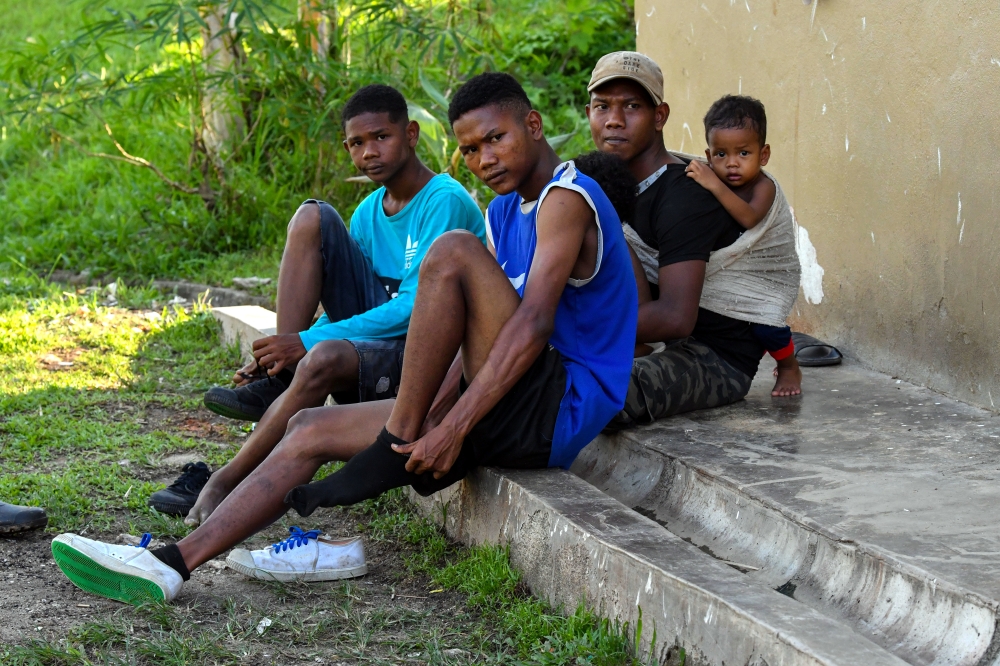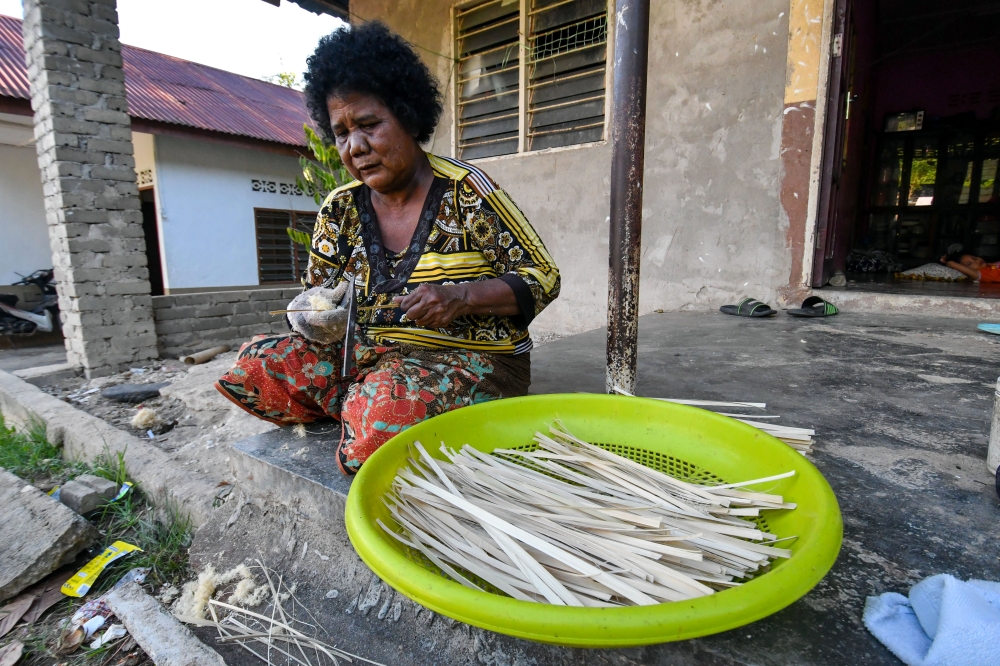GUA MUSANG, June 26 — ”Kerjak kuet untuk derik bek belak, ba masak ba senge bek.” This is a saying in the native language of the Mendriq Orang Asli community in Kelantan that they hold close to their hearts.
Loosely translated, it means, “Work hard for yourself for the sake of your future.” This is what the elders would utter each morning before their family members embark on their daily activities such as hunting or farming in the forest.
Apparently, this phrase has been in use for generations and serves as a good luck charm as well as a reminder to the younger members of the community of the importance of striving for success.
These days, however, one rarely hears this phrase being uttered mainly due to the low usage of the native language by the Mendriq community itself especially the younger generation who prefer to speak in Bahasa Melayu.
The fact is, it is becoming increasingly challenging for the minority group elders to preserve their ancestral language as the Mendriq tribe is dwindling in size with only 600 of them left now.
The Mendriq are a subgroup that comes under the Negrito Orang Asli group (which is one of the three main Orang Asli groups in peninsular Malaysia, the other two being Senoi and Proto Malay).
The Mendriq can only be found in three areas in Kelantan — Kampung Kuala Lah in Gua Musang, and Kg Pasir Linggi and Sungai Tako in Kuala Krai — with the majority of them (380) living in Kg Kuala Lah.
Based on the observations of language experts interviewed by Bernama, the Mendriq language could become extinct in 20 years if no serious efforts are taken to preserve the language which they described as a national heritage.
Globally, language experts have said around 6,000 languages, many of them being the spoken languages of minority ethnic groups, face extinction in the next 100 years.

Slow process
The process leading to a language’s extinction is usually a slow one with the contributing factors being, among others, formal schooling where children are not required to use their native language as well as mixed marriages.
Kamarul Jelok, 55, who resides in Kg Kuala Lah, told Bernama the younger generation in his village is inclined to using Bahasa Melayu rather than their own mother tongue to communicate because the national language is the medium of instruction in school.
“I’ve no issues about our children speaking in Malay as it is our national language but I hope the government will not marginalise our (native) language. Efforts to preserve our Mendriq language need to be taken seriously,” he said.
Kamarul’s views were shared by Kg Kuala Lah headman Ali Lateh who is sad and disappointed that his ancestral language is on the verge of disappearing into oblivion if the younger generation fails to uphold it.
“I am indeed very sad our youngsters are using the Mendriq language less and less. I think our language will become extinct and disappear from the world if nothing is done by our own society and the government,” he added.
No commercial value
According to Ali, the threat to their language’s existence first became evident during the early 1990s when more and more young people from his village started marrying into other indigenous groups or races and came to a point when they completely stopped using their mother tongue in their daily lives.
He also admitted the assimilation process has even changed their lineage’s physical appearance.
“A person from the Mendriq clan typically has curly hair and dark skin as well as a round wide face, flat nose and short chin. But now it has become harder for us to find people having such a physical appearance... this is one of the impacts of mixed marriages apart from the threat faced by our language,” Ali said, pointing out that currently, less than 10 people in their community possess the original Mendriq physical features.
Meanwhile, Associate Prof Fazal Mohamed Mohamed Sultan, a lecturer at the Faculty of Social Sciences and Humanities at Universiti Kebangsaan Malaysia, said according to the studies carried out by him since 2007, the Mendriq language is likely to become non-existent in about 20 years.
He said formal schooling has inadvertently caused the Orang Asli children from the minority group to assume that their native language had no commercial and economic value.
Moreover, he added, most schools do not have any specific subject catering to their Orang Asli students to enable them to learn about their language and culture. Currently, however, only the Semai language is being taught in schools with a sizeable number of students from the Semai Orang Asli group.
“The government, Ministry of Education and JAKOA (Department of Orang Asli Development) are doing their best to improve the standard of living of the Orang Asli through various measures, one of them being education. In terms of education, one of the initiatives taken by the government is the establishment of the Tengku Ampuan Afzan Teachers Training Institute (in Kuala Lipis, Pahang) which caters to Orang Asli trainee teachers.
“But I feel there is a need to take in trainee teachers from the Negrito group which includes the Mendriq subgroup. Currently, most of the Orang Asli teachers are from the Proto Malay and Senoi groups but there are none from the Negrito group,” he told Bernama.

In need of Negrito teachers
Describing this issue as problematic and worrying, Fazal Mohamed urged the government to do something about it considering the findings of his studies showing the current policy is not only posing a threat to the sustainability of minority languages but also their children’s educational performance.
He said the three main Orang Asli groups — Senoi, Proto Malay and Negrito — are different from each other in terms of language and culture, hence the importance of having trained teachers from the Negrito group as well.
“Based on our studies, we found that in terms of their educational performance, they (students from the Negrito group including Mendriq) lagged behind their peers from other Orang Asli groups. The Mendriq children are shy when they are with outsiders, so this is why it is important to have teachers from their own community to guide them and get them interested in studying,” he said.
He said while Malaysia has a specific government department to safeguard the rights and welfare of the Orang Asli, there is, however, no policy to protect and uphold their native languages.
“We need to understand that language is the symbol of a culture while culture is the symbol of a race. This is why it’s vital for a language to be upheld and preserved... not just for the survival of future generations of the ethnic group concerned but also as a national treasure,” he explained.
On what the authorities can do to preserve the Mendriq language, Fazal Mohamed said the best approach would be to archive all Orang Asli languages before they become extinct or get mixed up with other languages to the point of the original languages losing their authenticity. — Bernama



















